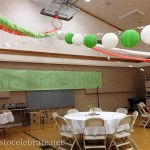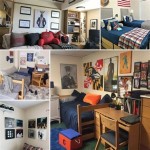Living Room Design and Decoration: A Comprehensive Guide
The living room serves as the heart of the home, a space dedicated to relaxation, entertainment, and social interaction. Its design and decoration significantly impact the overall ambiance and functionality of a residence. Creating a well-designed living room involves careful consideration of various elements, from spatial planning to the selection of furnishings and decorative accents. This article provides a comprehensive overview of key considerations for effective living room design and decoration.
Effective living room design begins with understanding the space's limitations and opportunities. Measuring the room accurately is crucial for determining furniture placement and flow. Consider the architectural features, such as windows, doorways, and fireplaces, and how they impact the room's layout. The intended use of the living room also plays a significant role. Is it primarily for quiet relaxation, active entertainment, or a combination of both? Answering these questions sets the foundation for informed design choices.
Planning the Layout: Functionality and Flow
A well-planned layout is essential for optimizing the living room's functionality and creating a comfortable and inviting atmosphere. The furniture arrangement should facilitate easy movement throughout the room, avoiding congestion and awkward pathways. Creating designated zones within the living room can enhance its versatility. For example, a seating area can be centered around a television or fireplace, while a reading nook can be established near a window with ample natural light. The placement of furniture should also consider sightlines and conversational groupings. Ensuring that seating is arranged to encourage interaction is a critical aspect of the living room’s function.
Traffic flow is a crucial element. Pathways should be clear and unobstructed, allowing seamless movement throughout the space. Avoid placing furniture in areas that impede access to doors or walkways. Consider the size and scale of the furniture in relation to the room's dimensions. Overly large pieces can overwhelm the space, while furniture that is too small can make the room feel sparse and disconnected. Experimenting with different furniture arrangements using floor plans or virtual design tools can assist in visualizing the layout and making informed decisions.
Selecting Furniture: Style, Comfort, and Durability
The selection of furniture is a pivotal aspect of living room design, contributing significantly to both its aesthetic appeal and functionality. Choosing furniture that complements the overall design style can make a strong aesthetic statement. Whether the design leans towards contemporary minimalism, classic traditionalism, or a more eclectic approach, the furniture should reflect this. Consider the color palette when selecting furniture, ensuring that pieces coordinate with the walls, flooring, and other decorative elements.
Comfort is paramount, particularly as the living room is often used for extended periods. Prioritize furniture that offers comfortable seating and support. Upholstery materials should be chosen based on their durability and suitability for the intended use. The choice of fabric should also consider the climate, maintenance requirements, and resistance to wear and tear. Consider selecting durable fabrics for high-traffic areas. The size and scale of the furniture must be appropriate for the room. Too much furniture of the wrong size can overwhelm the space, while too little can make the area feel sparsely populated.
Color Palette and Wall Decor: Setting the Mood
Color plays a significant role in shaping the living room's overall atmosphere. The color palette can influence the perception of space, creating a sense of warmth, coolness, or vibrancy. Consider the natural light in the room. Lighter colors tend to reflect more light, making a space appear larger and brighter, while darker colors can create a more intimate and cozy ambiance. Wall colors should complement the furniture and accessories, creating a cohesive and visually appealing scheme.
Wall decor provides an opportunity to infuse the living room with personality and style. Artwork, mirrors, and decorative objects can add visual interest and reflect the homeowner’s taste. The size and placement of artwork should be proportional to the walls and furniture. Mirrors can be used to enhance a sense of spaciousness and reflect light. Consider the style and theme of the artwork and ensure it complements the overall design aesthetic. Wall decor should not compete with the furniture but work in unison to create a balanced composition.
Lighting: Layering and Ambiance
Lighting is a frequently overlooked but critical component of living room design. Layering different types of lighting creates a versatile and inviting atmosphere. A combination of ambient, task, and accent lighting provides functionality, visual interest, and ambiance. Ambient lighting, such as overhead fixtures or recessed lighting, provides general illumination. Task lighting, such as floor lamps or table lamps, provides focused light for reading or other activities. Accent lighting, such as spotlights or wall sconces, highlights specific features or areas of the room.
The intensity and color temperature of the lighting should be carefully considered. Dimmer switches allow for adjusting the light levels to suit different activities and moods. The use of natural light should be maximized whenever possible, as it enhances the overall brightness and well-being within the space. The placement of light fixtures and the selection of lampshades play an important role in the overall design aesthetic.
Accessories and Finishing Touches: Personalization and Style
Accessories and finishing touches complete the living room design, adding personality and style. These elements are the opportunity to introduce personal touches and reflect individual preferences. Carefully chosen accessories can elevate the overall design scheme. Consider the selection of throw pillows, blankets, rugs, and decorative objects to add texture, color, and visual interest. Select accessories that complement the existing color palette and furniture style. The scale and placement of accessories should be proportionate to the room and furniture.
Plants and other natural elements can introduce a sense of freshness and vitality to the space. Incorporating personal items, such as photographs or souvenirs, can add sentimental value and warmth. Ensure that accessories are organized and displayed thoughtfully, preventing the space from appearing cluttered. Remember to consider the function and the aesthetics of each piece.

50 Inspirational Living Room Ideas Design
:strip_icc()/cdn.cliqueinc.com__cache__posts__212361__-2030968-1483470364.700x0c-8571e60cad7b42a981ab29ae10b5c153-497b002f87af4747b2ab38b560e7c0fd.jpg?strip=all)
How To Decorate A Living Room 20 Ideas And Common Mistakes

Living Room Decor Ideas For Your Home Design Cafe

Seven Effective Drawing Room Decoration Ideas Design Cafe

How To Decorate A Living Room 11 Designer Tips Houzz

20 Living Room Designs From Livspace Homes To Inspire You

How To Decorate A Small Living Room Forbes Home

Living Room Ideas

Modern Living Room Ideas For The Ultimate Hangout Spot

84 Stylish Living Room Ideas To Copy Now House Garden
Related Posts







